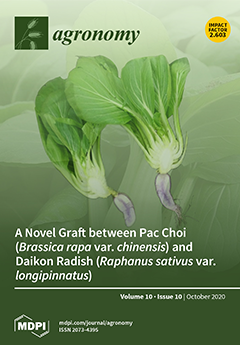The commercial availability of low-gluten or gluten-free flours has been increasing due to consumer demands, which raises new challenges for the management of stored product insects since little is known about the susceptibility of these flours to infestation. Here we measured oviposition and development of
Tribolium castaneum, the red flour beetle, a major pest of wheat and rice mills, on 18 different commercially available flours (almond, amaranth, barley, buckwheat, cassava, coconut, corn, garbanzo, millet, oat, potato, quinoa, rice, rye, sorghum, spelt, teff, and wheat) to assess the level of risk. The average number of eggs laid was highest for teff flour, with wheat, rice, buckwheat, sorghum, barley, rye, and spelt flour also having high oviposition. The lowest oviposition was for potato, quinoa, amaranth and cassava. Holding the eggs laid in these flours and evaluating the ability to develop to the adult stage demonstrated that the average number of adult progeny was highest for teff and wheat, followed by buckwheat, rye, oat, spelt, and millet. In an experiment where single eggs were placed directly in flour, the highest percentage development was in barley, buckwheat, sorghum, spelt, teff, and wheat. Time for 50% of single eggs to develop to adults was quickest for sorghum, spelt, teff, and wheat, while sorghum, buckwheat, corn, spelt, and barley had the quickest development of 90% of eggs to reach adults. There was substantial variation among the different flours which indicates variation in risk of insect infestation. As consumer interest in these flours continues to grow and these alternative flours become more prevalent in food facilities, understanding what diets insects successfully infest is critical to developing management tools.
Full article





